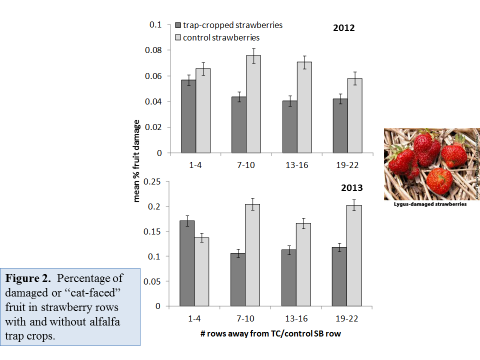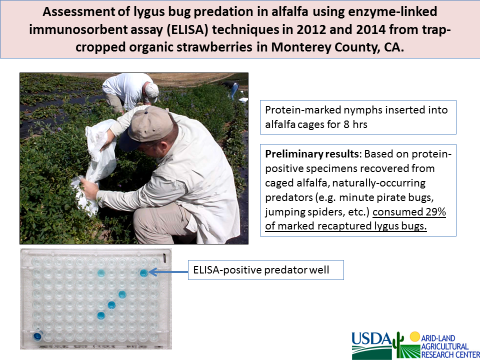As assessments of the lygus bug (Lygus hesperus) predator community in California strawberry are generally lacking, this project sought to identify and characterize effective and relevant generalist predators in this agroecosystem. The potential effects of alfalfa trap crops on prey (i.e. pest) densities and subsequent predation rates were also examined. Instances of such predation by true bugs, beetles and spiders were documented by predator collection from 1) alfalfa trap crops and associated strawberries, followed by gut content analysis via polymerase chain reaction (PCR) to detect consumption of lygus bug DNA and 2) trap crops alone, where protein-marked lygus bug nymphs were caged with naturally-occurring predators, who were later assayed using ELISA techniques to determine protein mark acquisition.
Polymerase chain reaction-based collections demonstrated that a wide variety of predators preyed upon this key pest (Table 1). Predation events in alfalfa trap crops compared favorably with associated strawberry rows, when assessing the percentage of similarly-collected predators that scored positive for lygus bug DNA (Fig. 1). With respect to caged alfalfa studies, naturally-occurring predators (e.g. minute pirate bugs, jumping spiders, etc.) consumed 29% of marked recaptured lygus bugs, relative to total number of protein-positive specimens recovered. When yield was compared in strawberry rows with and without alfalfa trap-crops, the percentage of damaged or “cat-faced” fruit was reduced in blocks associated with alfalfa (Fig. 2).



